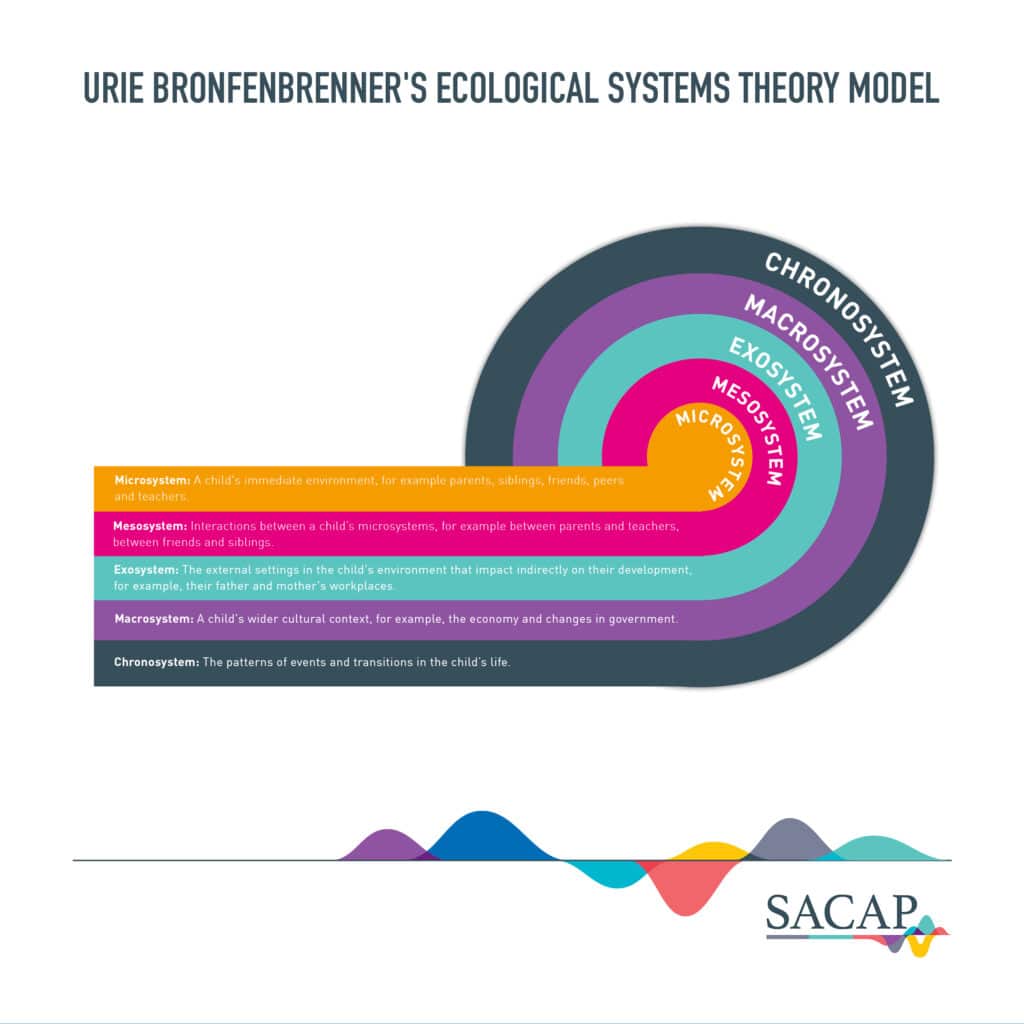There are many different tools for studying human behaviour, including various theoretical frameworks. One such example is the Ecological Systems Theory that Urie Bronfenbrenner developed.
This framework emerged in the 1970s as a response to other prevalent childhood development theories. Bronfenbrenner felt other theories were limited, so he developed a more holistic approach to understanding the layers of factors that influence childhood development.
This post will discuss the Ecological Systems Theory, how it relates to human behaviour, and its relevance today. But firstly, we’ll discuss why studying how we behave is beneficial in the first place.
Why study human behaviour?
Human beings are incredibly complex, so studying our behaviour requires a multifaceted approach. One theory might not fully explain how we tick, but holistic frameworks can provide us with helpful tools for understanding ourselves.
Our lives are made up of complex social dynamics, which we can fully understand once we unravel them. We probably haven’t stopped to think about how our behaviour is affected by others and larger social structures that we may not always consider.
According to the Oxford Dictionary definition, ecology studies how organisms relate to one another and their physical surroundings. Human beings are no different. The Ecological Systems Theory examines what influences might affect a child’s development.
Considering how an ecologist would study how organisms relate to one another and their surroundings, we can apply the same principles to people by examining all the many layers of influence that impact our lives. By understanding ourselves and others better, we can make the most of various situations and relationships, helping ourselves and others to thrive.
What is Ecological Systems Theory?
Bronfenbrenner’s Ecological Systems Theory responded to theories of childhood development in the 1970s. At the time, he felt it was necessary to consider all the influential factors in a child’s environment.
Bronfenbrenner argued that you shouldn’t only study one-way interactions in isolation, e.g. in a lab. In contrast, he examined the bi-directional relationships within real interacting systems to create a more comprehensive approach. In other words, he looked at how influential elements interrelate within a holistic framework.
For example, instead of studying how a child reacts to a parent or stranger, you also study how the child influences the parent or stranger in this environment. Looking at a diagram is helpful to understand better how this theory works.
In this diagram, there are concentric circles. These start with the child in the centre, surrounded by the microsystem. From there, the microsystem interacts with the mesosystem. The following concentric circles include the exosystem, the macrosystem and the chronosystem.

Each one of these circles represents a “layer” of influence on childhood development.
- Microsystem: this is the most influential layer, and includes family, school, church, peers and other environments where the child spends a lot of time.
- Mesosystem: this layer represents the interaction between the microsystem and the exosystem.
- Exosystem: this layer includes external influences such as the child’s family’s socio-economic situation, relationships with extended family and neighbours and the government.
- Macrosystem: one of the outer concentric circles, this layer represents the attitudes and ideologies of the society or culture that the child is being raised in.
- Chronosystem: finally, the last layer is concerned with environmental changes that occur throughout the child’s life, which could include life changes like divorce.
How can we use this framework?
The Ecological Systems Theory provides a helpful framework for understanding the different elements that can affect development.
For example, neglect or rejection can negatively affect self-esteem (in the microsystem). The opposite is likely true when a child experiences regular acknowledgement and positive reinforcement. If we look at the macrosystem, a child brought up in a very strict religious culture will have a different experience than a child brought up in a secular and liberal environment.
We can gain a more balanced perspective by examining the complex interplay of influential factors from a bird’ s-eye view. However, it’s important to note that these concentric circles are not a blueprint for how a child should or shouldn’t develop. They merely provide a framework for considering the broader influences that impact development. While this theory focuses on children, this approach can also apply to understanding adult behaviour.
To do this, you only need to replace elements within the diagram with those relevant to the individual at a given time. For example, the microsystem could include factors like work and a spouse instead of school and family of origin (which may have less impact on an individual as they mature). In fact, you can apply this in many different contexts, including the workplace.
Is the Ecological Systems Theory still relevant?
Bronfenbrenner later revised his original theory and renamed it the Bioecological Model. This revision focused on the role of the individual in their development instead of only influential environmental factors. For example, the chronosystem described above was later added to Bronfenbrenner’s original four ecological systems.
Therefore, Bronfenbrenner’s theory was always a work in progress and was updated as new research became available. Bronfenbrenner passed away in 2005, but his theory is still relevant today. It has laid a foundation for understanding human behaviour and influenced developmental psychology.
How is this approach relevant in the workplace?
As with many other theoretical frameworks, it’s possible to take the Ecological Systems Theory and apply it in the workplace. By understanding foundational theories about developmental psychology, we can better understand ourselves and our colleagues.
When we see individuals as a result of complex developmental processes, we can figure out how best to work with them. We can also gain a deeper appreciation for the skills we need to function better in a work environment, i.e. be more productive or compassionate.
If we take inspiration from the framework we’ve just discussed, we can also examine the broader influences that can impact a company’s growth. Using the revised Bioecological Model, we can examine each individual in the company and better understand how they can grow. To give a practical example, this could help create constructive skills development plans that consider an individual’s developmental history.
As you can see, there are many exciting possibilities for applying psychological concepts, which you can learn more about by completing our short online courses.
Learn about social psychology with SACAP Global
If the Ecological Systems Theory/Bioecological Model has piqued your interest, you should look at these human behaviour and development courses offered at SACAP Global:
- Intro to Human Behaviour: learn more about how you behave and how your behaviour impacts your connections with others
- Factors Influencing Human Behaviour: examine how your sense of self shapes your outlook and how well or poorly you connect with others.
- Domains of Psychology: expand your knowledge about the neuropsychological functioning of the human mind and body through various psychological approaches.
- Social Influences on Human Behaviour: explore the power of social influence and how it can affect self-development and identity.
- Social Identity Formation: investigate group dynamics and how social contexts influence our behaviour.
- Psychological Theories of Child & Adolescent Development: gain clarity on the critical milestones that shape how children and adolescents view themselves and others
If you’re interested in other related topics, browse our courses to learn more.
